What You Need a Melamine Foam Sponge for, and How to Use It
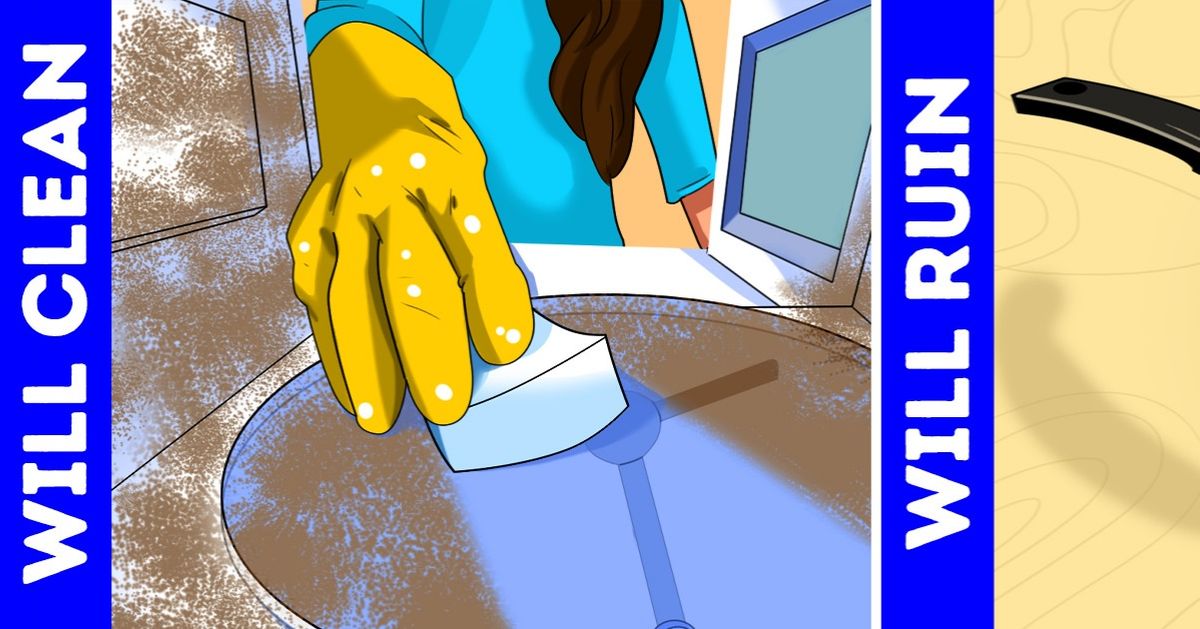
A melamine foam sponge is a great help when you need to clean something really dirty. But it’s not always clear how to use it — it’s hard to know if you need water or any other cleaning agents.
5-Minute Crafts will tell you how a melamine foam sponge works, how to use it, and what kinds of surfaces can and can’t be cleaned with it.
What a melamine foam sponge is
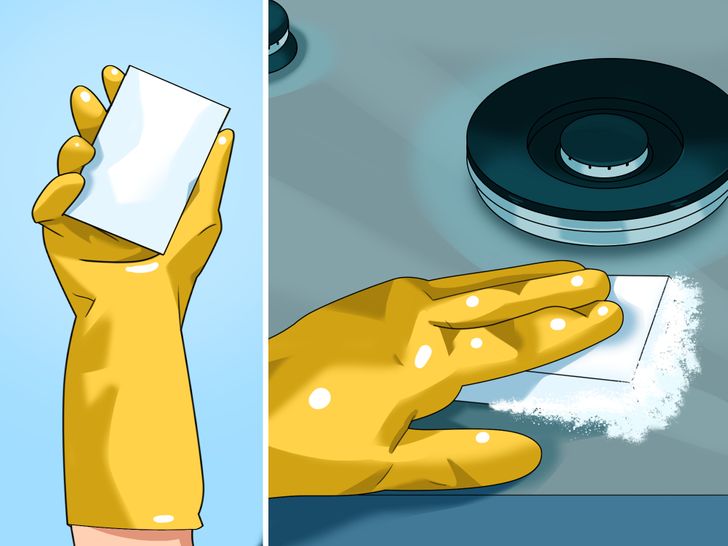
Such a sponge is made from a foam-like material consisting of a formaldehyde-melamine-sodium bisulfite copolymer.
It looks like an ordinary sponge, but when it comes into contact with water, it makes foam. As a result, you get an abrasive agent that looks like super-thin sandpaper. Additionally, melamine foam is porous, so when you clean with it, the dirt gets into the spaces between the fibers and stays there. These 2 factors make melamine foam sponges very effective.
How to use a melamine foam sponge the right way
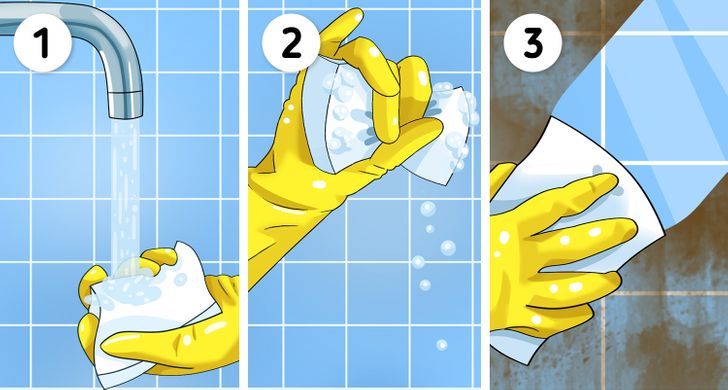
Using a melamine foam sponge is really easy as long as you do the following:
- Wet it well.
- Remove the excess water.
- Use it as a regular sponge.
You don’t need soap or any other cleaning products. The sponge will clean the surface with melamine foam.
Safety measures. Melamine can be aggressive on your skin, so before cleaning, put on gloves and don’t let the sponge come into contact with your skin. Also, before the actual cleaning begins, try the sponge out on a small spot of the surface you’re about to clean to make sure it’s safe.
What you can clean with a melamine foam sponge
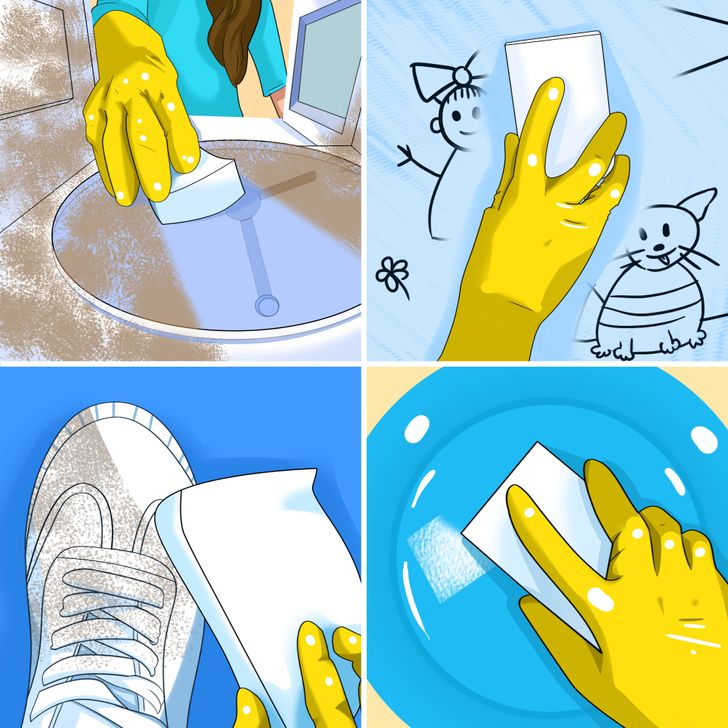
A melamine sponge can deal with all sorts of dirt. You can use it to remove the following:
- Stove residue
- Overcooked food
- Old spots in the fridge or microwave oven
- Dust and dirt from your keyboard
- Marker or chalk spots on the walls and furniture
- Hair spray on styling tools
- Old dirt on white sneakers
- Fingerprints on the furniture
- Old soap spots on tiles
- Sticky spots left by stickers and price tags
- Grease spots on clothes
- Mold on shower curtains
- Old nail polish
What surfaces you can’t clean with it
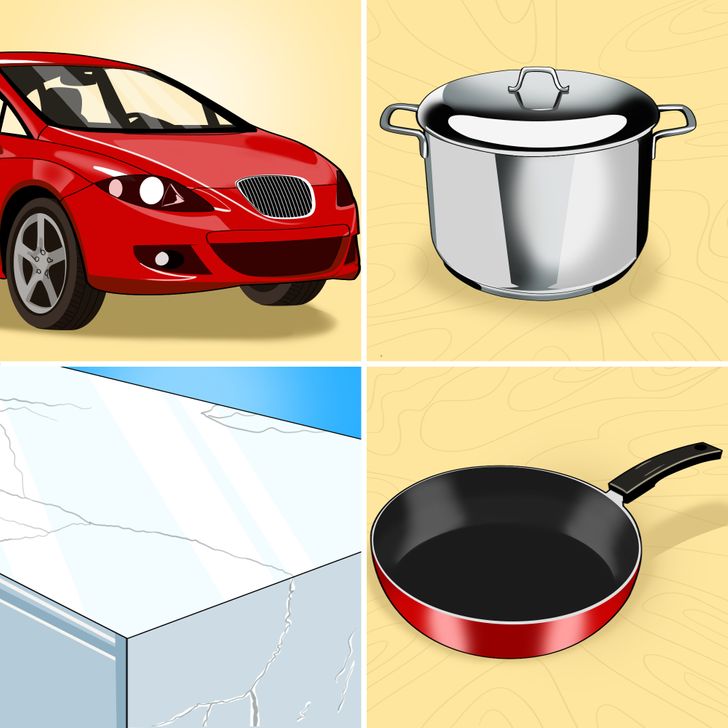
At the same time, for some materials, such sponges are too aggressive. Avoid using them on the following surfaces:
- Painted surfaces of your car — the abrasive structure of the material can damage the paint.
- Delicate surfaces, like marble and granite tabletops — you might remove the upper layer and make the surface appear dull.
- Pots and frying pans with non-stick surfaces — you’ll make scratches, and the pieces of the non-stick surface will get into the food.
- Stainless steel dishes and silverware — the shiny surface can get ruined by a melamine sponge, leaving things looking dull and scratched up.